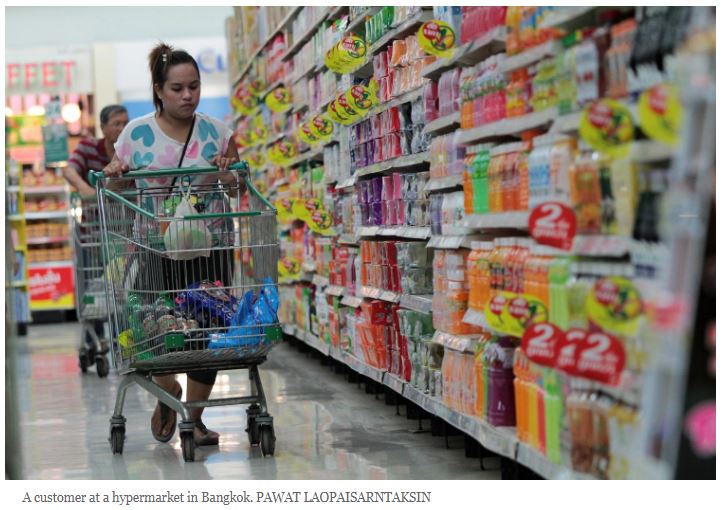Thailand: Nielsen identifies second-tier cities as new growth driver
Second-tier provinces are emerging as drivers of Thailand’s 800-billion-baht market for fast-moving consumer goods because of growing urbanisation and the government’s emphasis on infrastructure investment and tourism promotion.
Somwalee Limrachtamorn, managing director of Nielsen Thailand, said the retail index for fast-moving consumer goods in the first half improved on the year-earlier reading and is expected to grow by 4-6% in 2019.
“After spending power hiccupped two years ago, it gradually increased, seeing 3.5% growth in some months and the rising trend continues,” Ms Somwalee said, adding that the better growth came from more economic stability and the adjustments of consumer goods companies.
To cash in on the spending rebound, Ms Somwalee suggests consumer product companies refocus their marketing strategies in each region because of different consumers’ characteristics.
“Second-tier cities will be the new growth engine to drive the economy in the next 5-10 years because of over 44 state infrastructure megaprojects,” Ms Somwalee said
These developments will create huge demand for consumer products because of the growing urbanisation in second-tier cities. More migrants from rural areas and expats will move to these cities.
Nielsen defines second-tier provinces as those with a population in the range of 1 million to 5 million, such as Chiang Mai, Chiang Rai, Chon Buri, Nakhon Sawan, Nakhon Ratchasima, Ubon Ratchathani, Khon Kaen, Buri Ram, Udon Thani, Roi Et, Sakon Nakhon, Chaiyaphum, Nakhon Si Thammarat, Songkhla and Surat Thani.
Chachoengsao, Rayong and Ayutthaya are also attractive because these three provinces together contribute 35% of GDP.
Second-tier provinces have a lot of potential because of the expansion of urbanisation in such provinces. Their population accounts for almost 40% of Thailand’s total. Over 1 million people will be added to second-tier provinces by 2025.
Moreover, the new generation aged between 12 and 39 account for the majority of the population in second-tier provinces.
About 77% of the total new generation are forecast to move to second-tier cities.
More importantly, tourism in these small provinces accounts a big share of the total 3 trillion baht tourism revenue earned by Thailand.
Consumer lifestyles in the North and Northeast are similar to Bangkok’s, while the central region has a mixed culture and the South has a family community culture.
Vaughan Ryan, MD of Southeast Asia cluster, Neilsen and Somwalee Limrachtamorn (right), MD of Nielsen Thailand at the seminar on future of consumer products in second-tier cities.
Ms Somwalee suggests consumer goods companies provide location-based content in all regions.
For the South, they should focus on a variety across channels, increase product range, small packs and new products.
The Northeast has potential for the premium range. Meanwhile, companies have to focus on more product ranges, small packs and out-of-home media to access customers in the Central region, while the North has potential for premium and needs out-of-home media.
Source: https://www.bangkokpost.com/business/1709171/nielsen-identifies-second-tier-cities-as-new-growth-driver


 English
English





